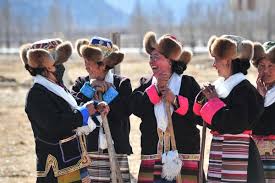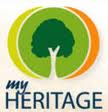** Creole? Cajun? Know the difference?
** Cool Idea for Baby-Picture-Gift…Find It?
** German Research; new book with editor Leland Meitzler
** Zapotec Mandible Jewelry?
What was a Creole? What was a Cajun?
What was a Creole? “This initially meant a person of European parentage born in a Spanish or French colony. In Louisiana it generally came to mean the French living there prior to its acquisition by the U.S. in 1803. Over the years the term extended to slaves owned by the Creoles, to their music, their cooking, their dialect, and so on. Nowadays it means anything derived from that unique medley of French, Spanish and African-American cultures that today makes a visit to Louisiana such a heady experience.” (Book, The Lost German Slave Girl, by John Bailey, 2003)
What was a Cajun? “A Cajun is different from a Creole. Cajuns are also of French origin. The British hounded them out of Nova Scotia in the 1750s because of their unreliable loyalty to the Crown and because they were Catholic to boot. Many eventually settled in Louisiana.” (Book, The Lost German Slave Girl, by John Bailey, 2003)
The Southern slavery laws; tidbits gleaned from the book , The Lost German Slave Girl, by John Bailey, 2003. “A white person of unmixed blood cannot be a slave but a person apparently white may, nevertheless, have some African taint….. sufficient to doom them to slavery.” Chief Justice Robinson of Kentucky, 1835. “The elevation of the white race, and the happiness of the slave, vitally depend upon maintaining the ascendancy of the one and the submission of the other.” Chief Justice Watkins, Aackomas Superior Court, 1854.” Want an eye-opening read to learn the laws governing slavery? Read the above mentioned book. It’s the true story of a 3-year-old German immigrant girl who ends up in slavery and the years of legal wrangling to get her set free. Betting you cannot read this with tears.
**************************
Some dear kind reader sometime back shared this photo/idea with me. Since I’ve had two great-granddaughters born in the last year, this idea really intrigued me. And it’s something “only” a grandma would do, seems to me. It shows a pedigree chart for the new baby then with photos of the parents, grandparents, etc, with some identifying information. But the photos are the main draw. Does anybody know which company offered this project??
****************************
How many of us subscribe to any of these magazines: Internet Genealogy or Your Genealogy Today? Besides having superlative and informative content, this publishing company offers many specific helps in special magazine edition format. (Click to www.internet-genealogy.com and then to Online Store and then Book Bundles.) Reason I mention this today is that Washington’s own, Leland Meitzler, has had the (dubious?) privilege of being the author/compiler for the newest special edition, that on Researching in Germany. This magazine/book is sure to be a “must have” for those of us with Germanic research to do but I mention it today because Leland has gone without sleep or going fishing with grandchildren in order to get this project done. Feedback I’m hearing is that this book is a winner.
********************************
Ending today, as I often do, with something funny or most interesting:

We subscribe to Archaeology magazine and in the Sept-Oct 2016 issue was a bit about how the Zapotec people’s of Mexico’s Oaxaca Valley as early as 700 B.C. wore jewelry carved from human mandibles! “The bones likely belonged to venerated ancestors and were worn as adornments during rituals that focused on the importance of hereditary power,” stated the article. If you look closely, you’ll see the hole for the necklace cord….. What is your first thought here??





